Foodborne illnesses commonly come with stomach upset, vomiting, and fevers. However, they can become serious, leading to other health issues, like meningitis, kidney damage, arthritis, brain and nerve damage. The U.S. Center for Disease Control and Prevention estimates that every year about 48 million Americans get a foodborne illness, 128,000 are hospitalized, and 3,000 die. Salmonella, for instance, is among the most common foodborne illnesses that causes hospitalization and deaths. Unfortunately, raw chicken can have this contaminant and spread through the process of defrosting, cooking, and storing it.
The safest methods for defrosting chicken
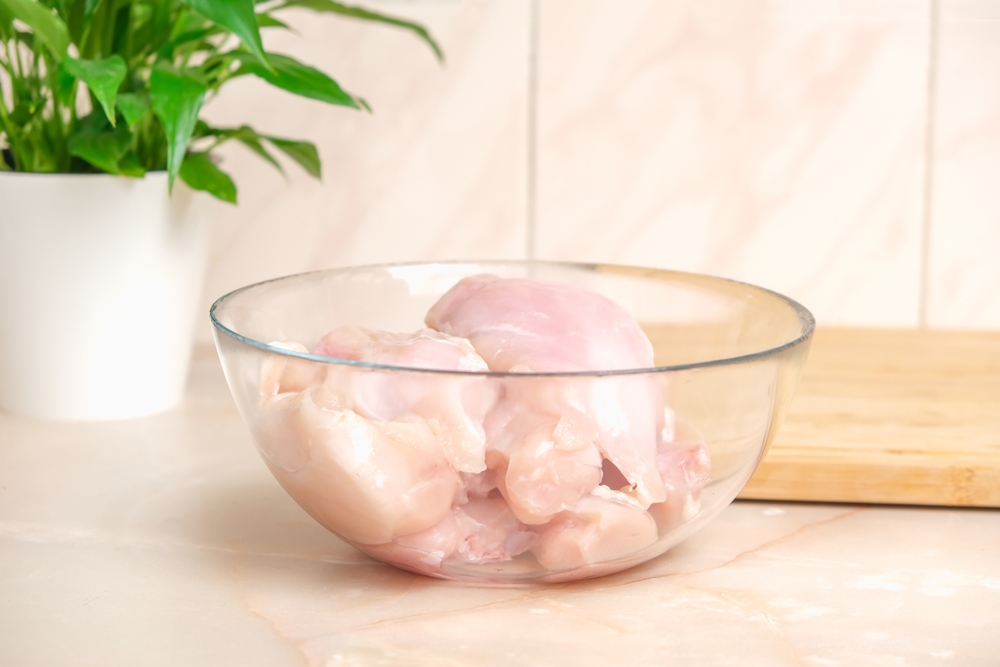
It’s easy to cut corners on food safety if you’ve done so previously with no consequences. However, it takes one slip-up to become sick. Defrosting chicken is one area where it’s extremely tempting to cheat. Most people are too familiar with the panic when it’s time to cook, but they forgot to defrost the poultry. They have a few options. One involves cooking it fully frozen for a bit longer than usual. But many recipes won’t work with that. So whatever you do, don’t leave the frozen package on a sunny patch of the kitchen counter.
The most reliable method
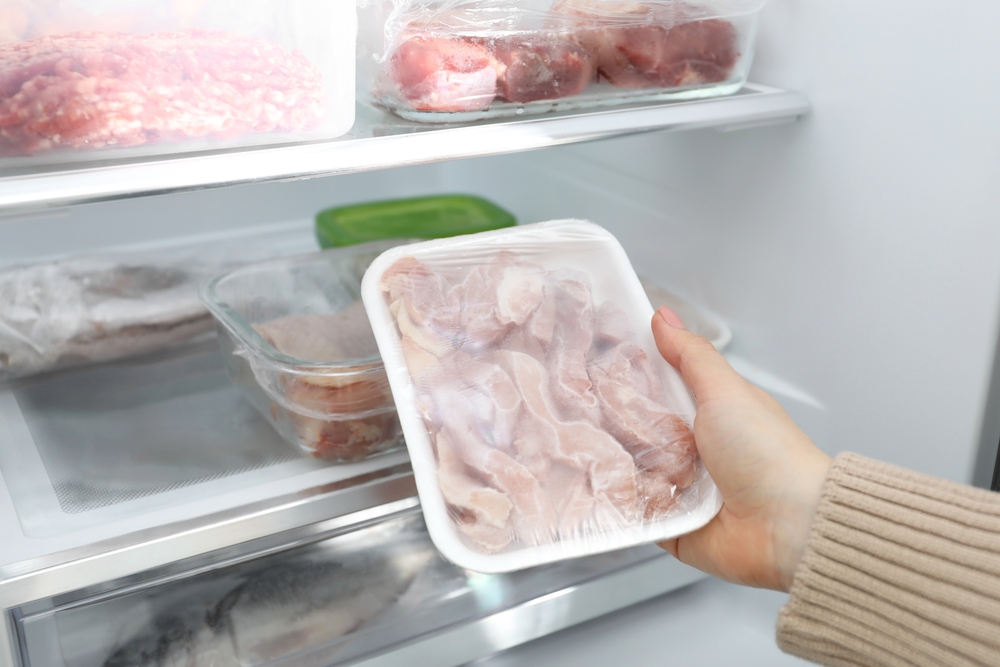
Defrosting chicken in the fridge is the most reliable technique, but it requires planning ahead. But it comes with a great perk: You can safely refreeze the poultry. “If you end up deciding that you don’t want to cook the chicken or you only want to use half of it, you can place it back in the freezer,” says Ellen Steinberg, registered dietitian and food safety specialist, to Delish. Keep the chicken on the bottom shelf in the fridge to prevent it from dripping onto others, and place it in the back where the temperature is most consistent.
“If you have the time, defrosting in the fridge overnight inside another container is probably the most foolproof,” says Dr. Donald Schaffner, professor of food microbiology and extension specialist at Rutgers University, to BHG. “Since the refrigerator is at a food-safe temperature, we don’t need to worry about the growth of pathogenic bacteria. And since the chicken is in a secondary container we don’t have to worry about the juices cross-contaminating anything.” However, if the chicken has been thawed for two days, you lose the refreezing option. You have to either cook it or throw it out.
The quickest method
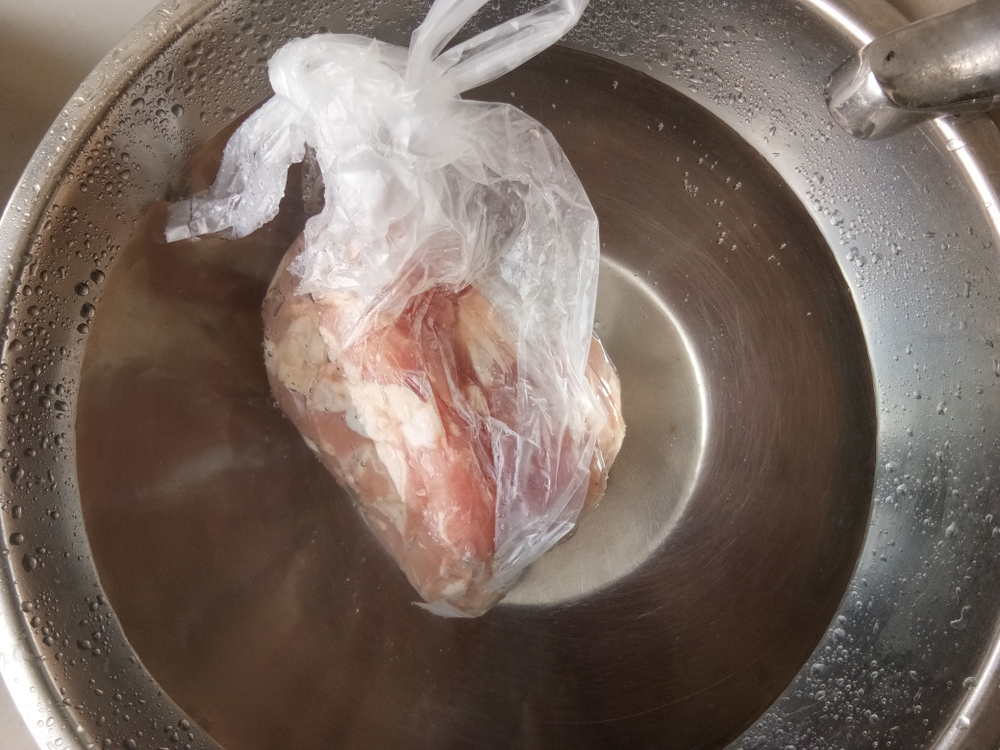
One quick and safe way to defrost chicken is with cool, running water. Water conducts heat more effectively than air in the fridge. But don’t just place a pack of poultry in a bowl of water and walk away, since the poultry will slowly freeze the water. Instead, keep the chicken in a sealed bag under running water, or replace the water every 20–30 minutes. Do not use hot water. “If you thaw chicken under warm or hot water, the outside of the meat can enter the temperature danger zone while the center is still frozen,” Steinberg says. The danger zone ranges from 40°F to 140°F, which is when bacteria grow most rapidly, exposing the food to potential illnesses.
The not-recommended method
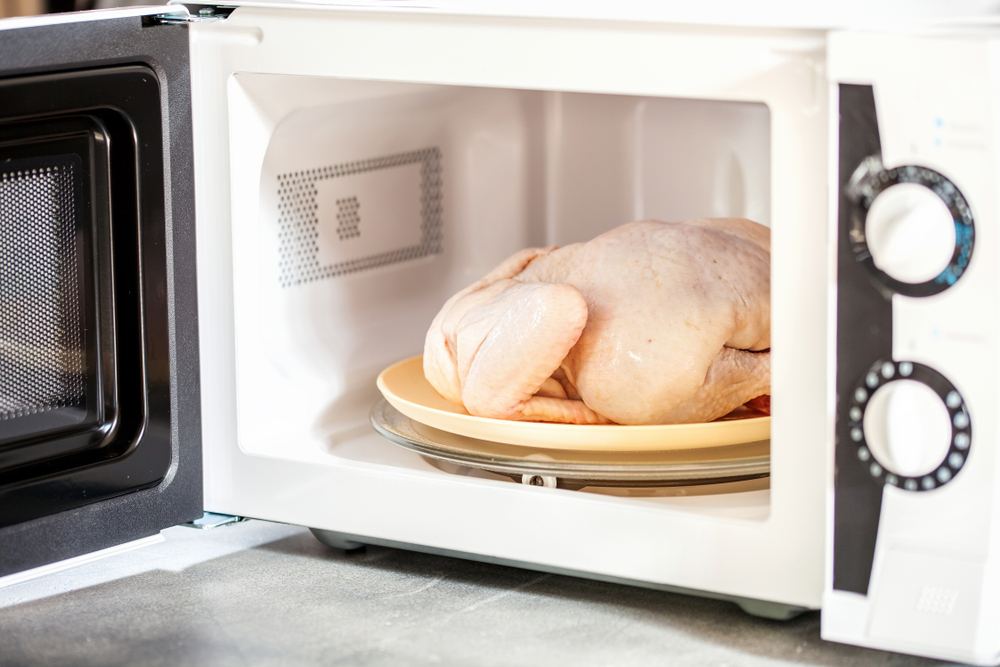
If you’re really in a pinch, you can microwave frozen chicken with the defrosting setting. It’s much faster than in the fridge, but it comes with a few caveats, despite being considered safe by the USDA. One is that you must cook it immediately. “You can’t defrost it and then decide to cook two hours later,” says Steinberg. And second, it negatively affects the taste and texture of the chicken. So it’s not recommended unless for recipes where that doesn’t matter as much, like when the chicken is shredded or submerged in sauce.
More food safety tips
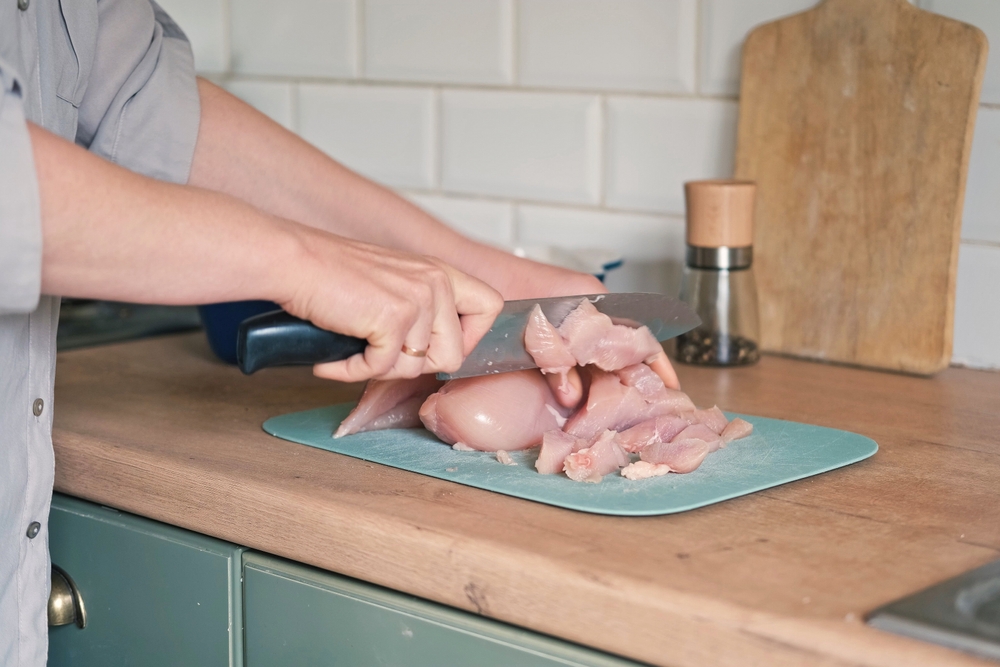
Don’t depend on the store packaging to contain bacteria in raw chicken. “You should put your [raw] chicken in a roasting pan or a baking sheet so the juices won’t spread,” says Steinberg. “And any surfaces that touch the raw meat, like your cutting board or sink, should be disinfected.” Steinberg also suggests using a separate cutting board exclusively for cutting raw meat. Additionally, don’t follow the common misconception that you must rinse raw chicken. In fact, food safety experts advise the opposite because it can lead to cross-contamination on the sinks, counters, utensils and other surfaces, according to FoodSafety.gov.
Bear in mind, thoroughly cooking chicken can kill bacteria that cause illness, but they may leave toxins behind if the poultry wasn’t handled properly beforehand. For example, E. coli produces a toxin that can withstand high cooking temperatures. In general, it’s impossible to know if a piece of raw chicken has gone bad by smelling or looking at it, says Medical News Today. The pathogens that cause foodborne illness don’t make chicken rot the same way bad cheese would. That allows these dangerous organisms to go undetected and make people sick. So when in doubt, throw it out.
Read More: 12 Mistakes To Avoid When Defrosting Meat

